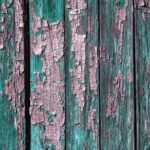Wood conservation: UV rays and color alteration
Wood is one of the most tested materials and, despite being of organic origin, its properties challenge the centuries and millennia.
When it comes to wood, however, we must consider the extreme variety of its behaviors. Just think of the often very significant differences that exist between the physical and mechanical characteristics not only of two different species, but also of the differences within the same category.
Consider, for example, the different workability between two sections of the same tree, or the different stability in the face of causes and agents of degradation between sapwood and heartwood.
Let’s focus, for example, on the alterations that artifacts of different wood species may present as a result of exposure to ultraviolet rays.


Over time, wood can undergo an aging process due to exposure to light. The more direct and massive the absorption of UV rays is, the more evident the color alterations will be. What happens during exposure to light is that the UV causes a photocatalytic effect, becoming activators of the oxidation process with consequent decomposition of lignin and any extractives (resins, tannins, etc.).
Depending on the type of wood, two different types of alteration result: for light woods (such as poplar, willow, fir, birch, pine, linden and larch sapwood) there is a yellowing which then turns yellow- Bruno; while for dark woods or dark heartwood (such as walnut, elm, yew, oak, ebony, rosewood, pine and larch heartwood, teak) there is instead a discoloration, and subsequently, both for light and for dark ones, the tendency to assume a uniform greyish colour.
Obviously this natural color alteration phenomenon mainly occurs when the product is placed outdoors in bright locations, but it can also occur indoors if the product is not properly exposed.
It is therefore important to reiterate that wood is truly an extraordinary material, with a composition and characteristics that allow its – extremely long – durability. However, this is true if hygienic conditions suitable for the wood itself are maintained, if the environment and thermal stress are monitored and managed correctly. In these conditions, then, wood can truly challenge centuries and millennia.
You can find the full article at keepartforever.com




